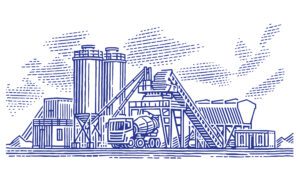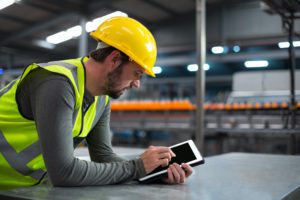Factories Push to Re-Open – How People Will Play a Vital Role
Our previous blog post looked at how, as manufacturing plants slowly begin to open up, they need to adapt to change and adopt technology in order to be more resilient. In this blog post, we take a look at the importance of the role of human workers and the importance of investing in people-centered technology.
While parts of the United States are still under lockdown, some states are starting to loosen restrictions. Manufacturing operations abroad are slowly getting back up and running, and this is starting to happen in the U.S., as manufacturers carefully plan to reopen plants.
All across the U.S., workers have been sent home. If fortunate enough, they are working remotely, but many have been laid off or furloughed. They are calculating how much longer than can go on without gainful employment. The unemployment rate for all major working groups rose to 14.7 percent in April, the highest level since the Great Depression. Many businesses shut down overnight or severely curtailed operations to try to limit the spread of COVID-19, resulting in the loss of a decade’s worth of growth by the first quarter of this year; economists expect the effects of the second quarter will be worse.
This is a pivotal moment as manufacturing companies need to determine how to best position themselves and prepare for a post-COVID-19 future. Government officials need to determine what policies help empower and encourage business reinvestment in the workforce – from technology, to safety and training. The complexity putting people back to work and restarting businesses is real.
A Renewed Commitment to People
Manufacturers should make a “Contract-with-Workforce”: a commitment to improving and providing sustainable operations and jobs even through crisis. A recovery will take bold ideas and strong commitments from company leaders to pull workers off the sidelines and put them back into the workforce. Leaders should commit that humans are their most valuable asset, but the tools they are equipped with are decades old.
Research from the World Economic Forum (WEF) reveals that the Lighthouse Network of leading factories has been investing heavily in people.
The role of human workers has intensified during COVID-19 and the need to augment them with technology has never been more important. Manufacturers need to equip their frontline factory workers with the tools they need to collaborate and stay connected.
In the last eight weeks, we have seen many of our neighbors furloughed – but many companies have hired at a pace never seen before. Companies like Walmart, Target, Lowes and even grocery store chains had to quickly hire thousands of employees to meet a new kind of consumer demand. The only way these companies were able to do so was by deploying technology to help reskill and upskill employees.
Manufacturing’s ability to handle shutdowns and disruptions is directly related to the supply chain’s resilience. Supply chains start with investments and people. Investing in people starts with giving them the tools to be successful. The strength of any organization is its people. We are only as strong as our team.
5 Lessons Learned From the Pandemic
The fear that somehow automation is going to replace our furloughed workforce couldn’t be farther from the truth. The fact is that manufacturing, even precision manufacturing, requires skilled employees who know and understand the systems they work with. The automation cited by the Federal Reserve Bank of San Francisco is not even a possibility within the foreseeable future – to the extent that it replaces the amount of work that was lost with our workforce being sent home.
Here are some lessons we’ve learned:
- Embrace the advantages of technology for hiring and training employees. Hiring, training and retaining employees must be done through the lens of connected work and the technologies that support it.
- Some industries, like auto and aerospace, have been shaken to the core. These companies need not invest precious capital into automation pilots – but into the people who quickly turn on product lines.
- Oil and gas companies are under immense pressure to sustain both their businesses and the environment. At a fundamental level, they need to leverage technology to quickly shut wells in a safe and efficient manner.
- Technology doesn’t replace workers; it augments them. Robots may make sense in very controlled environments, like tasks that require repetition. This improves overall productivity by freeing up human workers to focus on more nuanced, strategic work.
- As companies invest in digital infrastructure – including private networks, 5G and mobile devices – to support an increasingly connected and wireless work environment, they must get it right the first time, now that budgets are under new scrutiny.






